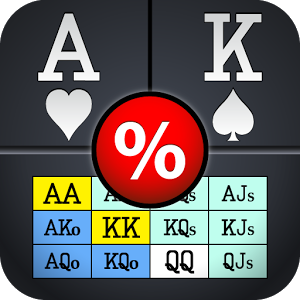It depends largely on your opponent
What follows is an excerpt from Jeff’s books, Advanced Pot-Limit Omaha Volume II: LAG Play and The Short-Handed Workbook.
Here’s a typical pot-limit Omaha (PLO) situation, one that represents the majority of the hands you will encounter when playing against the blinds. You open with a raise from the button before the flop, and only the big blind calls. The flop comes X-X-X (any three cards), and your opponent checks. The SPR (stack-to-pot ratio) is greater than 8.
The question is this: How often do you follow through with a continuation-bet (c-bet)? 50 percent of the time? 75 percent? 100 percent?
The answer is that you c-bet as often as you can get away with it without becoming a check-raise magnet. And how often that is depends largely on your opponent.
Let’s say that your opponent is the type who never check-raises, never checks and calls, and always folds to a c-bet after he checks. Against this opponent, you can safely follow through with a c-bet roughly 100 percent of the time (you might check the nuts), because you are going to win every time that you bet. But if your opponent is on the other end of the spectrum and is the type to go for a check-raise every time that he checks to you in this situation, you are basically betting only the nuts or close to it, because that is better than betting air and then folding to a raise, betting a weak or non-nut draw and then folding to a raise, or betting a marginal hand like one pair and then having to guess how good it is when your opponent raises.
| Opponent’s Check-Raise Frequency | Our C-Bet Frequency | |
| Opponent A | Approximately 0% | Approximately 100% (almost any flop) |
| Opponent B | Approximately 100% | Approximately 0% (the nuts or close to it) |
Obviously, most players fall somewhere in between those two extremes, and, of course, you are going to flop the nuts more than 0 percent of the time (and you’d probably bet some hands other than the nuts against 100 percent check-raisers, too), but you get the point: Your optimal c-bet frequency is going to be player-specific, and dependent on how often your opponent check-raises, and to a lesser extent on how often he check-calls.
In a perfect world, you would simply bet every single time that your opponent checks. The problem is that you are going to miss the flop about as often as your opponents are, and — this being Omaha — you are going to miss (or simply not get a very strong flop) more often than not. As a result, if you simply bet every time, you are going to wind up getting check-raised often by your more astute opponents — which is something that you would prefer to avoid, because it makes your opponents less predictable and harder to play against — when you really want to win the small pots without much of a fight when nobody has anything.
Obviously, against the weakest opponents who never check-raise and/or will always fold to a c-bet when they check, you can go ahead and bet every time that they check. But against everybody else, you should check back from time to time, and the trickier the player is — that is, the more often he is willing to check-raise — the more often you should check behind.
PLO Tip: The less likely an opponent is to check-raise, and the more likely he is to fold to a c-bet after he checks, the more often you should follow through with a c-bet.
PLO Tip: The trickier an opponent is — that is, the more often he check-raises, and to a lesser extent the more often he check-calls with marginal hands — the more often you should check behind.
Target Behavior and Reinforcement
Now, you don’t have to play a perfectly balanced game; you just have to check back often enough to make your opponents more predictable and easier to play against. You want them to bet when they have it and check when they don’t.
Every time that you check behind, it reinforces the idea that you don’t bet every flop, which makes the times that you do bet appear stronger by tightening your perceived betting range, and discourages your opponents from trying a check-raise with their strong hands, due to the threat of your taking the free card. And every time that your opponent sees you check back top pair, undertrips or overpairs on paired boards, flush draws, gutshots, open-end straight draws, and such on the flop, it reinforces the idea that you don’t always have nothing every time that you check behind on the flop, which will discourage your opponents (some, but not all) from blasting away on later streets.
And again, you tailor your check-back/c-bet range to your opponents, meaning that you go ahead and bet as often as you can get away with it, while checking behind more often against your more sophisticated opponents.
This gets messy at times; sometimes you will check and get outdrawn when your opponent would have folded to a bet, and sometimes you flop top pair and still have just top pair on the turn when your opponent comes out firing (and you often aren’t folding for one bet), and so on. But nobody said the game is easy. Full-ring PLO and playing in multiway pots is fairly straightforward and fairly easy to learn; shorthanded PLO and playing in shorthanded pots is a lot trickier, with a lot more gray area.
In the case of the continuation-bet, you want your opponents to become predictable by virtually eliminating their check-raise move, so that they’ll bet when they have it and check when they don’t. And you reinforce this behavior by checking behind with some frequency, varying that frequency based on the particular opponent.
PLO Tip: You want your opponents to bet into you when they have it and check when they don’t.
PLO Tip: Every time that you check behind, it reinforces the idea that you don’t bet every time, which makes the times that you do follow through with a c-bet appear stronger.
Submit your review | |








